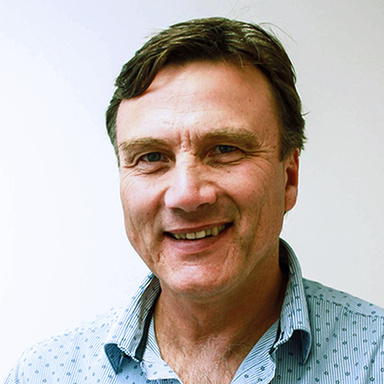Image credit: Getty Images
An ear, nose and throat specialist at Mediclinic Louis Leipoldt recently performed a cochlear implant on a three-year-old girl born with severe hearing loss.
Thanks to the procedure and coordinated care, she can now hear.
When three-year-old Marley’s parents first brought her to Dr Johan Nell, an ear, nose and throat (ENT) surgeon at Mediclinic Louis Leipoldt, he diagnosed her with profound congenital hearing loss and recommended a life-changing cochlear implant.
Marley, who was born in Bredasdorp, has always been a very active little girl, so her hearing impairment wasn’t immediately apparent, says her dad Eugene. “At first, my wife and I just thought she was a little bit late with speaking. She was about two years old when we started really noticing that she had a hearing problem.”
The couple began testing her hearing by clapping and calling her from behind, but she showed no reaction. They took her for a hearing test, which revealed she had profound hearing loss. “From there, we were referred to Dr Nell. He guided and reassured us throughout the process, until Marley got her first cochlear implant on 13 May.” She is set to have the second implant in November this year.
Despite the challenges, Eugene says every step of the journey has been invaluable. Today Marley recognises and reacts to her name. “The implant is still being adjusted. It’s not yet at its full volume, but so far she’s reacting well to sounds.” Marley requires consistent rehabilitation with an audiologist and speech therapist at The Carel du Toit Centre for Hearing Impaired Children in Cape Town. Her parents have decided to relocate so she can be enrolled full-time.
When cochlear implants are used
Cochlear implants can be used for both adults and children, Dr Nell explains. “Only people with severe to profound hearing loss are candidates for cochlear implants,” he says. This is usually patients who don’t benefit from using a hearing aid.
Children with severe to profound hearing loss cannot learn to speak naturally, and without treatment, they become completely deaf, requiring to learn sign language and attend specialised schools. Cochlear implantation can restore good hearing ability, allowing them to attend regular schools with hearing children. Adults are able to have normal conversations and enjoy music.
“The earlier the patient has the cochlear implant, the better the final outcome will be,” says Dr Nell. He explains that children with profound hearing loss are generally referred to an ENT surgeon by an audiologist and do best if the procedure is performed before the age of three years.
Hearing loss can be picked up by neonatal screening done in hospital after birth or at an audiologist practice within a baby’s first six weeks. If the screening indicates a problem, they will be referred for auditory brainstem response testing (ABR). Small electrodes are placed on the child’s head and ears, then sounds are played through earphones. “This measures the response of the brain to sound input in the ear giving us a better idea of the hearing levels,” explains Dr Nell.
Children usually sleep through the test, and no response is required from the child.
Adults should ideally receive cochlear implants within a year or two after developing severe to profound hearing loss. “Cochlear implants work well for patients who are suitable candidates,” says Dr Nell.
High success rates
If profound hearing loss is identified early, cochlear implants can be used from six months old, according to Dr Nell. Implantation before age three is ideal because young children's brains have excellent neuroplasticity, which is the ability to form new connections and learn new skills. “In Marley's case, she presented late just before age three, and we did the implant when she was three-and-a-half. So statistically, she will take a bit longer to learn speech.”
While she waited for her implant, Marley had to wear a hearing aid to keep her brain stimulated with sound, preventing it from losing the ability to respond to sound later. After receiving her cochlear implant, her progress has been excellent as she continues with her therapy sessions.
A team approach is essential from the beginning. Four to six weeks after surgery, the implant is switched on and therapy with hearing and speech specialists begins.
How the cochlear implant works
The cochlear implant works through an external microphone that picks up sounds and sends them to a small sound processor worn outside the ear. This transmits the sound to a receiver placed under the skin, which then sends signals through the electrode array (tiny wires) to the hearing nerves inside the ear. Surgery takes 2-3 hours and requires an overnight hospital stay.
“The electrode array has multiple contact points,” Dr Nell explains. “It stimulates the cochlea with low frequencies at the base of the cochlea and high-pitched sounds as it goes to the apex of the cochlea.”
As technology continues to advance, cochlear implants are becoming increasingly sophisticated at delivering clearer, more natural sound to the hearing organ, which then travels to the brain through the hearing nerve, he adds. This means that people with cochlear implants can expect even better hearing outcomes in the future.
Further publications on the topic
Doctors 1


